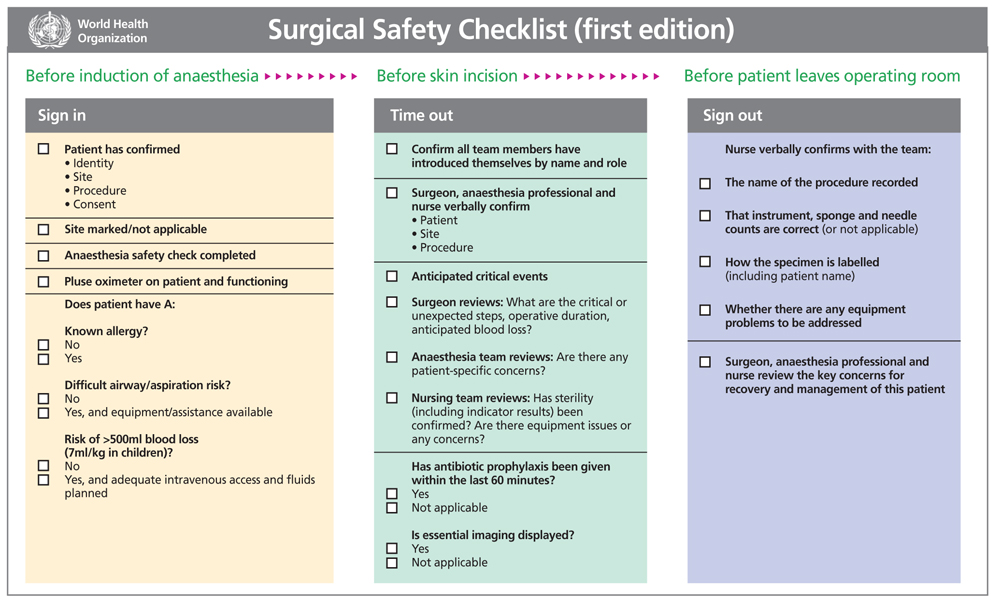J Korean Med Assoc.
2015 Feb;58(2):100-104. 10.5124/jkma.2015.58.2.100.
Effective communication for patient safety
- Affiliations
-
- 1Department of Radiology, Seoul National University College of Medicine, Seoul, Korea. Leejy4u@snu.ac.kr
- KMID: 1958370
- DOI: http://doi.org/10.5124/jkma.2015.58.2.100
Abstract
- Effective communication is essential for patient safety because many medical errors are related with failure in communication between medical providers. The reason why communication failure occurs can be found in communication block by teamwork malfunction, communication skills that are not trained and standardized, and problems occurring during handoffs. Teamwork malfunction is usually caused by vertical hierarchy and interpersonal conflicts, which interrupts speaking up, expressing concerns, and sharing opinions. Communication skills that are not trained and standardized often result in miscommunication and omission of critical information. Structured and standardized communication techniques such as SBAR (situation-background-assessment-recommendation) should be implemented and developed. Handoff, which moves patient information to other staff, is a highly risky process, which also needs standardization along with implementation of checklists to reduce medical errors.
Keyword
Figure
Cited by 2 articles
-
Approaches to improve patient safety in healthcare organizations
Sang-Il Lee
J Korean Med Assoc. 2015;58(2):90-92. doi: 10.5124/jkma.2015.58.2.90.Development of the Patient-Centered Nursing Culture Scale for Hospitals
Esther Shin, Sook-Hee Yoon
J Korean Acad Nurs. 2019;49(5):613-630. doi: 10.4040/jkan.2019.49.5.613.
Reference
-
1. Coiera E. Communication systems in healthcare. Clin Biochem Rev. 2006; 27:89–98.2. Safran C. Online medical records save time & energy. Healthc Inform. 1994; 11:81–84.3. Tang PC, Jaworski MA, Fellencer CA, Kreider N, LaRosa MP, Marquardt WC. Clinician information activities in diverse ambulatory care practices. Proc AMIA Annu Fall Symp. 1996; 12–16.4. Solet DJ, Norvell JM, Rutan GH, Frankel RM. Lost in translation: challenges and opportunities in physician-to-physician communication during patient handoffs. Acad Med. 2005; 80:1094–1099.
Article5. Zinn C. 14,000 preventable deaths in Australian hospitals. BMJ. 1995; 310:1487.
Article6. Lee JY. Relationship between medical companion. Seoul National University College of Medicine. Clinical ethics. Seoul: Seoul National University Publishing Cultural Institution;2014. p. 273–285.7. Leonard M, Graham S, Bonacum D. The human factor: the critical importance of effective teamwork and communication in providing safe care. Qual Saf Health Care. 2004; 13 Suppl 1:i85–i90.
Article8. Leonard MW, Frankel AS. Role of effective teamwork and communication in delivering safe, high-quality care. Mt Sinai J Med. 2011; 78:820–826.
Article9. Flemming D, Hubner U. How to improve change of shift handovers and collaborative grounding and what role does the electronic patient record system play? Results of a systematic literature review. Int J Med Inform. 2013; 82:580–592.
Article10. Sutcliffe KM, Lewton E, Rosenthal MM. Communication failures: an insidious contributor to medical mishaps. Acad Med. 2004; 79:186–194.
Article11. Leonard MS, Frankel A, Simmonds T, Vega KB. Achieving safe and reliable healthcare. Chicago: Health Administration Press;2004.12. Thomas CM, Bertram E, Johnson D. The SBAR communication technique: teaching nursing students professional communication skills. Nurse Educ. 2009; 34:176–180.13. Narayan MC. Using SBAR communications in efforts to prevent patient rehospitalizations. Home Healthc Nurse. 2013; 31:504–515.
Article14. Sorra J, Famolaro T, Dyer N, Nelson D, Smith SA. Hospital survey on patient safety culture: 2012. user comparative database report [Internet]. Rockville: Agency for Healthcare Research and Quality;2012. cited 2015 Jan 22. Available from: http://www.ahrq.gov/profes-sionals/quality-patient-safety/patientsafetyculture/hospital/2012/hospsurv121.pdf.15. World Health Organization. WHO surgical safety checklist [Internet]. Geneva: World Health Organization;cited 2015 Jan 22. Available from: http://www.who.int/patientsafety/safesurgery/checklist/en.
- Full Text Links
- Actions
-
Cited
- CITED
-
- Close
- Share
- Similar articles
-
- The Effect of Nurses’ Perception of Patient Safety Culture and Organizational Communication on Patient Safety Management Activities
- Experience of Communication for Patient Safety by Perioperative Nurses
- The Effect of SBAR Communication on Nurse's Perception about Communication and Attitudes toward Patient Safety
- Patient Safety Education: Team Communication and Interprofessional Collaboration
- Influence of Professionalism and Organizational Communication on Patient Safety Culture of Nurses in Hemodialysis Units


